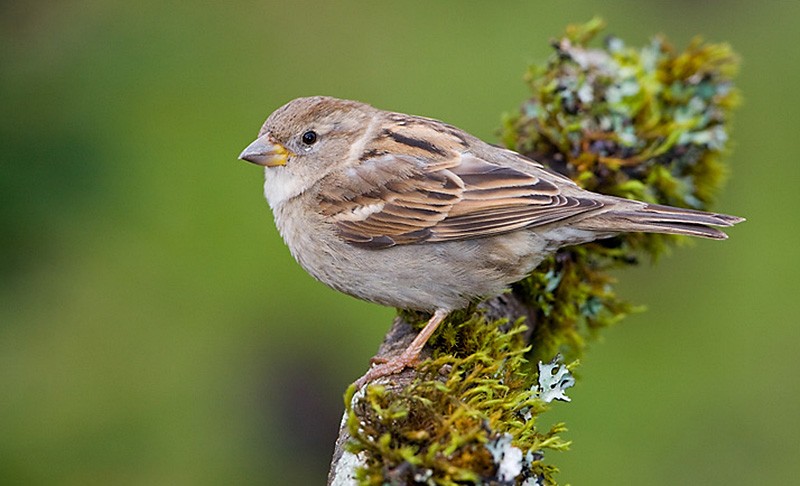The House Sparrow (Passer domesticus) is found in almost every corner of the world and are often considered invasive.
When you step outside, hear loud chirping, and look into the bushes to find some small brown and gray birds fluttering around, then you’ve most likely seen House Sparrows!
Read on to discover more about them!
On this page
Identification
Male House Sparrows have a gray crown, white cheeks, black beaks, black throat, and a chestnut face. Their back is mainly brown striped with black, and their underparts are gray.
Female House Sparrows, on the other hand, are plain light brown overall with lighter colored underside and striping on the back.
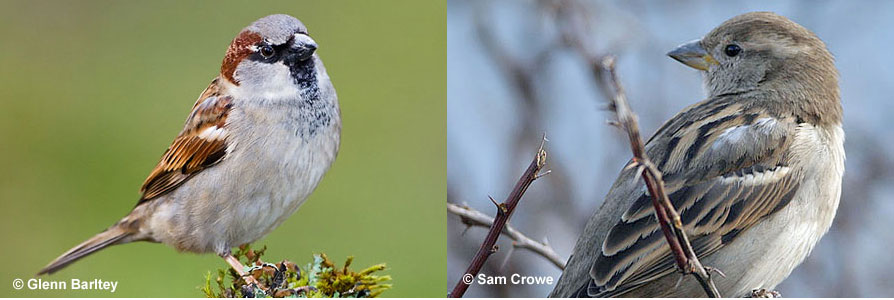
Male House Sparrow is on the left. Female House Sparrow is on the right
House Sparrow’s song is what seems to be a never-ending series of cheep and chirrup notes. Males sing to advertise their availability and to attract females, and females only sing when trying to attract a new mate after losing one.
House Sparrow’s call is similar but only consists of a single cheep note. These birds use it to indicate submissiveness or as a call during courting and copulation. Females also make a harsh chattering sound.
Juvenile House Sparrows are remarkably similar to females, but their striping is very faint, they have a bright yellow bill, and they usually look ruffled.
Food
House Sparrows are omnivorous. They primarily feed on seeds and grains but will eat anything available when needed. It searches for discarded food and crumbs in larger human settlements, such as towns and cities. They also visit backyards to snatch birdfeed from feeders.
Birds living in rural areas feed on grains, livestock feed, and seeds, with a preference for corn, wheat, and oats. They can also eat plant matter, such as buds, berries, and fruits.
In summer, they also eat insects, such as beetles, flies, and caterpillars, earthworms, and may even scavenge dead lizards and frogs. Animal matter is especially important for nestlings.
These birds forage mostly on the ground and may perch on small branches to reach seeds and fruit. They’re very adaptable and hunt insects in many different ways. They may catch them mid-air, visit lights at dusk, or snatch smashed insects from cars.
Nesting and Eggs
House Sparrows are an interesting species since they may attempt to breed just a few months after hatching while still having their juvenile plumage and can have up to 4 broods in a breeding season. The success rate increases with age and experience. However, the first few broods might be unsuccessful.
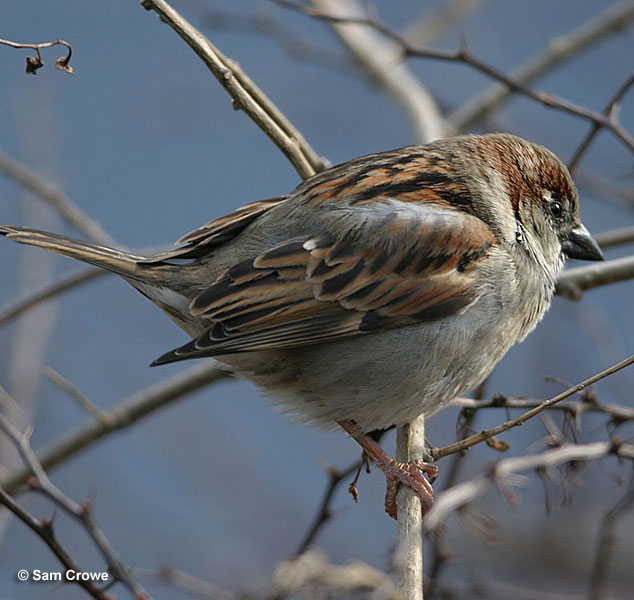
House Sparrows are usually monogamous and mate for life, although extra-pair copulation still occurs. The birds that don’t find a nest or a mate might take on a helper role instead. In that case, they help a pair raise their young, and when one member of the pair is lost, then the helper stands a higher chance of being chosen as the next mate.
House Sparrows nest in cavities, mostly in artificial structures, but also in tree hollows and in the open on tree branches. An unmated male initiates nest construction, female House Sparrow assists but is less active.
The nest is made of different, usually dead and dry plant matter, lined with feathers, string, and paper. Out in the open, it is typically globular in shape, whereas in cavities, it may be cup-shaped.
The female lays 1-8, on average 3-6 whitish to greenish or bluish white eggs spotted with gray or brown. House Sparrow eggs are a little under an inch in length and about 0.6 inches in width. Both members of the pair are a part of the 10-14 day incubation process.
Juvenile House Sparrows stay in the nest for 11-23 days while both parents feed them.
Current Situation
House Sparrow is a very common and widespread species found in most parts of the world, including the Americas. Native to Eurasia and northern Africa, it was first introduced to North America in 1851 when it was released in New York.
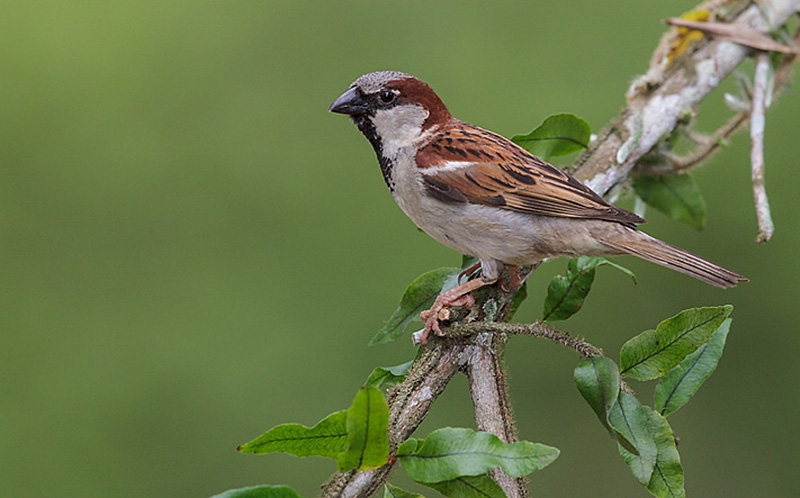
Generally, House Sparrows live around artificial structures and rarely in unaltered natural habitats. You can find them in cities, towns, rural settlements, isolated houses, and even near human settlements in habitats usually unsuitable for them, such as deserts or forests. You won’t find them in woodlands, grasslands, or forests if there aren’t humans nearby.
Although these birds are highly adaptable and benefit from their ability to coexist with humans, they prefer drier conditions and can survive without water, getting the necessary liquid from berries.
Their estimated population numbers around a billion mature individuals. Although the population in western Europe experiences a decline in numbers, possibly due to pesticides and herbicides, the species is still going strong and doesn’t require conservation.
Facts
- You can sometimes see a House Sparrow ‘bathe’ in dust. They make a shallow depression in the ground and throw dust and soil over themselves as if it were water.
- House Sparrows tend to flock together and have a hierarchy. Males with larger patches of black on their throats are considered older and more dominant, and the younger ones usually give way to them.
- Only 20-25% of the hatchlings survive the first year, and adult birds’ annual survival rate is 45-65%. Their average life expectancy in the wild is three years. However, the oldest wild House Sparrow lived to an astonishing age of 19 years and 9 months.
- House Sparrows symbolize different things, from vulgarity and lower class to simplicity, joy, community, and hard work.
- House Sparrows can swim and have been observed to dive underwater when their life is under threat.
Similar Species
Some species are very similar to House Sparrows. The differences lie in the details.
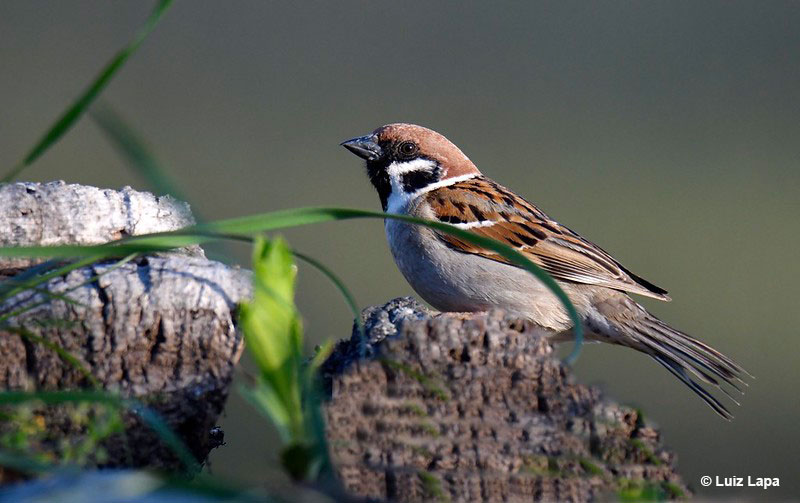
Eurasian Tree Sparrow. Photograph © Luiz Lapa
Eurasian Tree Sparrows look almost exactly like the male House Sparrows.
However, the Eurasian Tree Swallows’ head is entirely brown, they have white cheeks with black spots, and the black on their throat is more clearly defined.
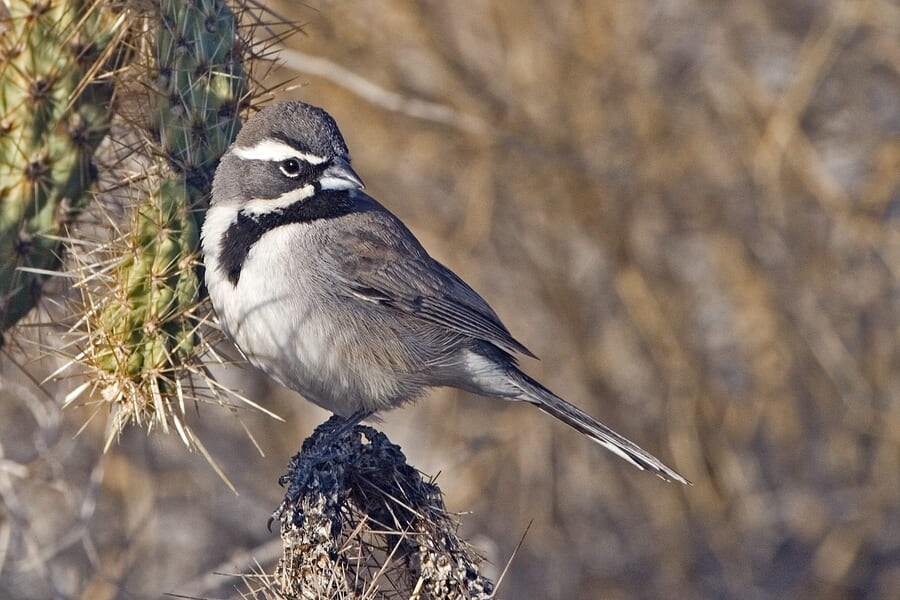
Black-throated Sparrow
A bit more different, Black-throated Swallows are more uniformly colored and have a larger black patch on their throat that extends to their chest.
They’re grayer in color, their head and cheeks are gray, and they have a white eyebrow and mustache stripe.
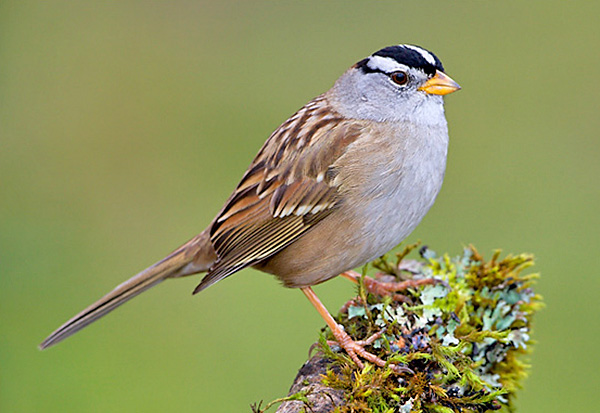
White-crowned Sparrow. Copyright Glenn Bartley
Immature White-crowned Sparrows look like a mix of male and female House Sparrows.
They have a brown-buff-black-white striped back, lighter gray underside, gray head with a reddish-brown crown, and an orange bill.
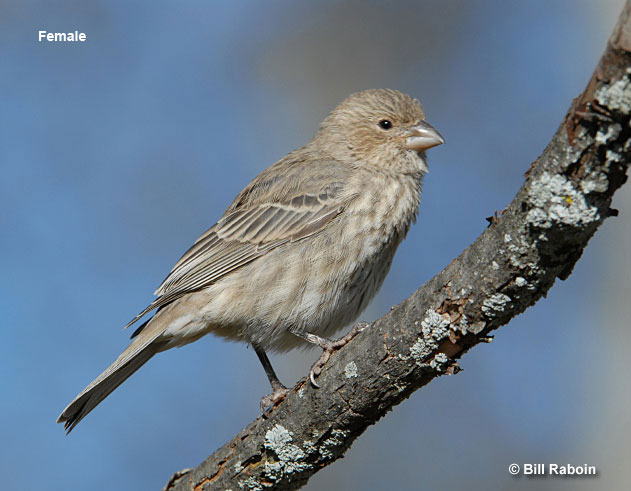
Female House Finch
At first glance, you might mistake a female or immature House Finch for a female House Sparrow.
However, the House Finch has heavily streaked underparts and lacks the buffy eyebrow stripe.
Frequently Asked Questions
What is the difference between a sparrow and a House Sparrow?
House Sparrow is a species in the Sparrow family. You can identify it by its brown-black striped back, gray underside, gray crown, white cheeks, and black throat.
What are House Sparrows known for?
House Sparrows are very widespread and sociable. They have adapted to living with humans and are often considered a pest species.
Is House Sparrow invasive?
House Sparrow is an invasive species. They have a negative impact on native bird populations by hogging food sources and pushing other bird species out of their nests and nesting sites; they’re incredibly noisy and may carry different diseases.
Are House Sparrows friendly?
House Sparrows are friendly with humans, although they still remain cautious. However, they can be quite aggressive with other bird species.
Do House Sparrows remember humans?
House Sparrows can remember humans, but to what extent is debatable.

